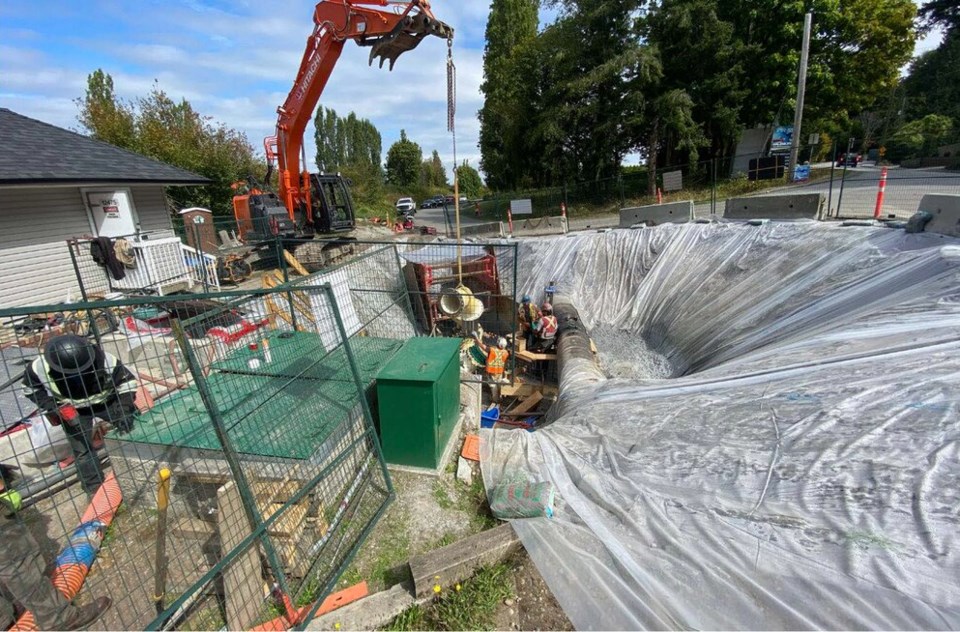A $29-million sewer pipe upgrade designed to help Surrey absorb its growing population was put on pause after contractors dug up human bone fragments near Crescent Beach.
Contractors working on the sewer project discovered 25 traces of human remains and roughly 4,000 Indigenous artifacts near a pump station in South Surrey in the summer of 2020, said Colin Meldrum, Metro Vancouver's director of engineering, design and construction in its liquid waste department.
Meldrum says it's not clear how many people were buried there, but that it was at least two individuals and possibly more.
“If you find two right femurs, you’ve got at least two people,” he said.
Among the thousands of artifacts, workers found what appear to be projectile spear tips and arrowheads.
Semiahmoo manager of archaeological services Don Welsh said the ancestral remains of over 700 individuals have been found in the area around Crescent Beach, including roughly 30 in the last three years.
“It’s pretty clear it’s a cemetery,” said Welsh. “For a while, they buried quite a few people at a time there. At some point, they started burying people in boxes in trees.”
In many cases, burial sites that were once intact have been scattered by development.
When the original sewer line was put in 40 years ago, there were no archaeologists onsite, says Welsh.
This time, work immediately halted for a couple of days on the project, and roughly 100 days of archaeological screening is expected to add another $1 million to the project's cost.
An archaeologist with the Katzie First Nation, working with Semiahmoo First Nation and Seyem’ Qwantlen, was brought in to examine the site. Members of the nations conducted a ceremony to ensure the cultural safety of workers, and the Musqueam Indian Band and Tsleil-Waututh Nation both received daily updates on discovery during the investigation.
All the First Nations agreed to keep the remains in place.
Workers and planners had already faced some challenging terrain; during preliminary soil testing in 2020, they had to time drilling with low tides and daylight.
Over a year later, work on the sewer line shifts to the north and the pump station has been registered as an archaeological site, said Meldrum.
The Crescent Beach Force Main project involves replacing a 40-year-old fibreglass pipe under White Rock, Crescent Beach and South Surrey on its way to the Annacis Island Wastewater Treatment Plant.
Workers are currently laying nearly two kilometres of sewer pipe north of the Serpentine River and are expected to finish work in late 2022. Once completed, the sewer line will serve all of White Rock and most of Surrey south of the Nicomekl River.
Surrey is among the fastest-growing municipalities in Metro Vancouver; by 2041, the Ministry of Health projects it could overtake Vancouver as B.C.'s most populous city.
Population growth isn't the only thing putting pressure on the region's sewer system. Low-lying communities like Crescent Beach are likely to be some of the first to feel the effects of rising sea levels brought on by climate change. That’s led the City of Surrey to roll out adaptation projects, like improving storm drains and raising roads in the area.
If things get worse, city staff have also recommended buying out 400 homeowners, retreating inland and giving up the neighbourhood to the sea.
If you're in need of support, contact the KUU-US Crisis Line Society at 1-800-588-8717. You can find more resources on the First Nations Health Authority website.

